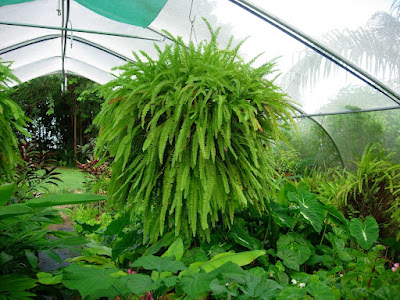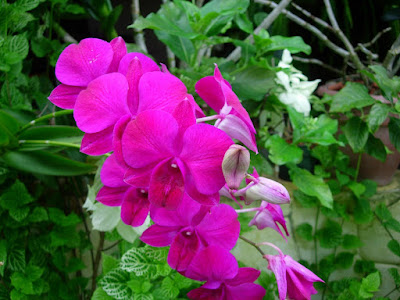Translate
Saturday, September 27, 2008
Friday, September 26, 2008
Wednesday, September 17, 2008
Monday, September 15, 2008
our latest family addition



Hello I am Rusty and I have found a new home with Helen and Chuck. I was found by a good samaritan who rescued me after I was poisoned and brought to the vet. The vet told some people about me and they got in contact with Helen and Chuck and the rest is History. I feel very comfortable and have three playmates. I love the large open garden to run around and roll in the grass. I couldn't have found a better home.
Saturday, September 6, 2008
The Butterflies of Barbados
Barbados has very few Butterflies due to its location in the Atlantic. My hubby has a special interest in butterflies (lepidoptera) and has documented the local ones. We have also assisted the philatelic bureau at the Barbados Post Office with some of their commemorative stamps featuring the Butterflies of Barbados a few years ago.


Female Mimic with wings closed. This butterfly is a seasonal visitor and the larval food is purslane a wild type of portulaca weed . It is said that the mimic is an old world butterfly from the African continent and came to the Caribbean via storms/hurricanes and perhaps the slave ships.
male and female mimic feeding with monarch
The female Mimic (hypolimnas misippus), notice how similar in colour it is to the monarch the butterfly. The Monarch has very few predators and this butterfly mimics it for protection... hence the name mimic. The male looks nothing like the female it is dark brown with white spots with a purple edge on the wings.
The female Mimic (hypolimnas misippus), notice how similar in colour it is to the monarch the butterfly. The Monarch has very few predators and this butterfly mimics it for protection... hence the name mimic. The male looks nothing like the female it is dark brown with white spots with a purple edge on the wings.
 The Orion (historis odius) resembles an old leaf to fool predators, the butterfly feeds on rotting fruit and its larval food is the Cecropia and also known as bois canoe in the islands.
The Orion (historis odius) resembles an old leaf to fool predators, the butterfly feeds on rotting fruit and its larval food is the Cecropia and also known as bois canoe in the islands.
 The Peacock ( anartia jatropae) tends to habitat swampy areas and the larval food is water Hyssops (bacopa caroliniana)
The Peacock ( anartia jatropae) tends to habitat swampy areas and the larval food is water Hyssops (bacopa caroliniana) This is the caterpillar of the monarch butterfly. It starts out as a tiny egg under the leaf of the milkweed. It is an eating machine that only feeds on milkweed (asclepsias curassavica). The bigger the caterpillar the larger the butterfly. The milkweed is a poisonous plant and since the caterpillar feeds on it, it becomes poisonous to predators. If the milkweed runs out the caterpillar will go in search of milkweeds. If it cannot find it it will pupate if it is big enough or die. They will find a sheltered spot under a leaf, roof or any receptacle to pupate. The caterpillar will go into a " J " position and hang from the top and then quickly spin into a beautiful green cocoon or chrysalis.
This is the caterpillar of the monarch butterfly. It starts out as a tiny egg under the leaf of the milkweed. It is an eating machine that only feeds on milkweed (asclepsias curassavica). The bigger the caterpillar the larger the butterfly. The milkweed is a poisonous plant and since the caterpillar feeds on it, it becomes poisonous to predators. If the milkweed runs out the caterpillar will go in search of milkweeds. If it cannot find it it will pupate if it is big enough or die. They will find a sheltered spot under a leaf, roof or any receptacle to pupate. The caterpillar will go into a " J " position and hang from the top and then quickly spin into a beautiful green cocoon or chrysalis. There is a tiny band of gold on the top of the chrysalis and many times I am still in awe of this magnificent transformation of mother nature. It is a remarkable sight when viewing the transformation from caterpillar to chrysalis.
There is a tiny band of gold on the top of the chrysalis and many times I am still in awe of this magnificent transformation of mother nature. It is a remarkable sight when viewing the transformation from caterpillar to chrysalis. After five days or so the chrysalis becomes transparent and the butterfly becomes visible through the casing. The butterfly is ready to enter the world. They come out early morning so that their wings can dry and in a few hours they are feeding on nectar and looking for a mate to start the cycle all over again.
After five days or so the chrysalis becomes transparent and the butterfly becomes visible through the casing. The butterfly is ready to enter the world. They come out early morning so that their wings can dry and in a few hours they are feeding on nectar and looking for a mate to start the cycle all over again.

The Monarch (danaus plexippus) is probably the most popular and talked about butterfly in the world. It is found in many parts of North and South America. In north America they migrate to the warmer climate of Mexico to spend the winter months. There they breed and die, their offspring will migrate back to the land of their parents in spring and will start the journey again in fall to Mexico like their parents.
In Barbados, and warmer climates the monarch is an all year resident since there is no need for them to migrate. They are found in colonies where their larval plant milkweed (asclepsias curassavica) grows. However due to the indiscriminate use of pesticides and herbicides, the development of land for agriculture and housing has left the monarch in a precarious position. The larval food milkweed is no longer available when the land is cleared and the monarch has to find new habitats. Many of these habitats have already been destroyed and it is becoming very difficult for the monarch to survive in the Caribbean. We have tried in the past to start a project in schools to help children set up butterfly gardens at the schools and at home and was met with very vigorous opposition with some people in the Education Ministry. That was about 12 years ago, perhaps the timing was wrong and now is the time to try again. I think I will try again since new people are there and the thinking is more environmentally friendly.
My girls and boy

Bobby at the top, my heart breaker was killed by a vehicle late at night this July 2008. I miss him sooo much. He was a little scamp, lovable and full of mischief. He loved people, he was found on a beach with his sister Betsy both abandoned . We took them in and fell in love. Will never find another bobby.
Subscribe to:
Comments (Atom)



































